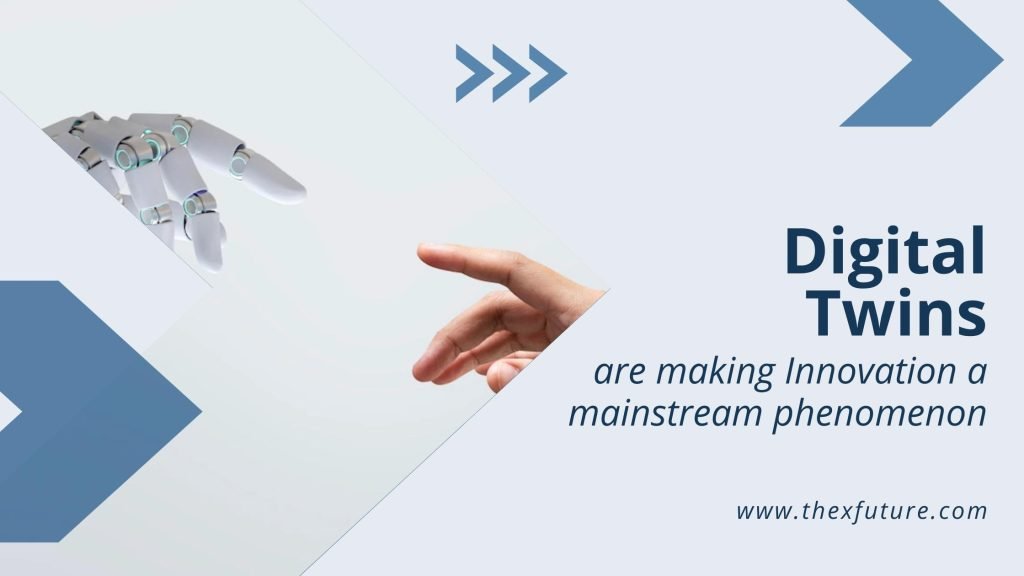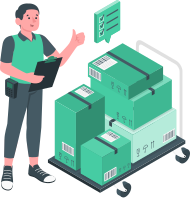Digital twins are set to be a key driver of innovation as an increasing number of industries look forward to using them.
A digital twin is defined as a virtual model designed to replicate a physical object and its behavior with the surrounding environment.
It is a relatively new concept for most people, but former faculty at the University of Michigan, Michael Grieves, is credited with applying the concept for the first time in manufacturing in 2002.
It’s almost the last quarter of 2022, and two decades later, digital twins are set to democratize innovation and make them a mainstream phenomenon.
Let’s know more about how digital twins can make innovation a mainstream phenomenon:
What are Digital Twins
Digital twins allow users to go beyond traditional simulations in terms of the depth of analysis.
Regular simulations allow us to understand the behavior of a component under a single point of focus.
Digital twins, on the other hand, enable us to study the interaction between a component’s digital model and multiple forces and conditions in its surroundings.
Also, simulations require collecting the physical object’s data once and using it for all future analyses.
However, a digital twin is connected with the original physical object, thereby establishing a two-way flow of information.
This way, additional data for further analysis can be collected on a real-time basis, and the results can be cross-referenced as well.
As a result, we can agree with the fact that digital twins provide users with richer insights that address multiple vantage points simultaneously, thereby tremendously improving the quality of results.
What are the different types of digital twins?
Depending on the scope of the study, digital twins are classified in various ways.
But in order to facilitate ease of study, digital twins are classified on the basis of their area of application.
Let’s have a look at four types of digital twins based on their application areas:
- Component twins or Parts twins: The digital model of the smallest component under analysis is referred to as a component twin. Though the term ‘part twin’ is often used interchangeably with component twin, it is generally reserved for less important components.
- Asset twins: A digital model based on the combination of two or more components is called an asset twin. It is used to understand the correlation between the concerned components by studying their mutual interactions.
- System twins/Unit twins: The digital model of multiple assets is called a system/unit twin. System twins help improve the visibility of different assets within a system and their interactions to enable optimization or performance enhancement.
- Process twins: Process twins are comprehensive models of various systems with a focus on their collective interactions to evaluate overall performance and efficiency.
The advantages of Digital Twins that make them ideal for democratizing innovation
In this section, we will have a look at the benefits that enable digital twins to make innovation simpler:
Digital Twins boost the quality of product research and design.
Digital twins make product research and design more efficient as they help generate significant datasets regarding the product’s performance and efficiency in a predictive manner.
These insights help reduce the costs, improve the product quality right from the initial iterations, and iron out most issues.
Thus, creating digital twins help reduce the probability of major loopholes in your products and aid in the manufacturing process.
They help improve the efficiency of existing products
Businesses can use digital twins of their existing products as well as customer feedback to further improve them.
This is undertaken either through changes in the manufacturing process and/or making changes to the product features.
The ability to virtually test the modified processes and product features also helps build trust in updated versions of the same.
Digital Twins make it easier to optimize product maintenance
Since digital twins allow users to understand the mutual interactions of different assets, they make it easier to understand what part might malfunction if another part with codependence fails.
Also, the comprehensive analysis aids in improving the interoperability of modified components that reduce the issues faced with older products.
Depending on the company’s future aspirations and market conditions, such as preference for new materials or considering end-of-life due to technological advances.
Market opportunities and examples of Digital Twins-based disruptions
Despite the fact that digital twins require significant investments and expertise, which limits their viability in many cases, they have multiple use cases in today’s scenario.
In this section, we will have a look at the arising opportunities and examples of using digital twins for innovation:
Digital twins can help solve complex infrastructure development and management problems by reducing dependency on physical analysis.
Also, it can help understand the ins and outs of intricate structural problems faced by different industries such as construction, manufacturing, defense, and aviation.
Power grid management is another area where digital twins can accelerate innovation as it helps identify potential bottlenecks, roadblocks, and hazards in greater detail.
Automobiles, railways, public transport, and other utility services can also benefit from digital models and fastrack their innovation journey without risking their existing infrastructure.
Recently, Siemens successfully installed the new Upper Engadine wastewater treatment plant in Switzerland. It was developed and tested in a completely digital environment with the help of digital twins.
Leveraging AI, IoT, and other technologies helped Siemens automate simulations and testing even without building a physical prototype.
Another famous use case of digital twins came in the form of the restoration of the Notre Dame Cathedral in France. The renovation efforts achieved greater success as the architects and restoration team were able to get a more realistic digital model of the cathedral as compared to generally available blueprints.
Wrap Up
Businesses are yet to discover the potential of digital twins, but one thing is certain; it will enable faster, more efficient, and scalable innovation efforts.
They are about to bring a fundamental change in the way businesses operate and reinvent most of the approaches that are currently applied in today’s date.
Given the advances in technologies like Big Data, AI, AR/VR, ML, and IoT, we can expect major disruptions in multiple industries led by digital twins, making them crucial drivers in the realignment and repivoting of various industries.


